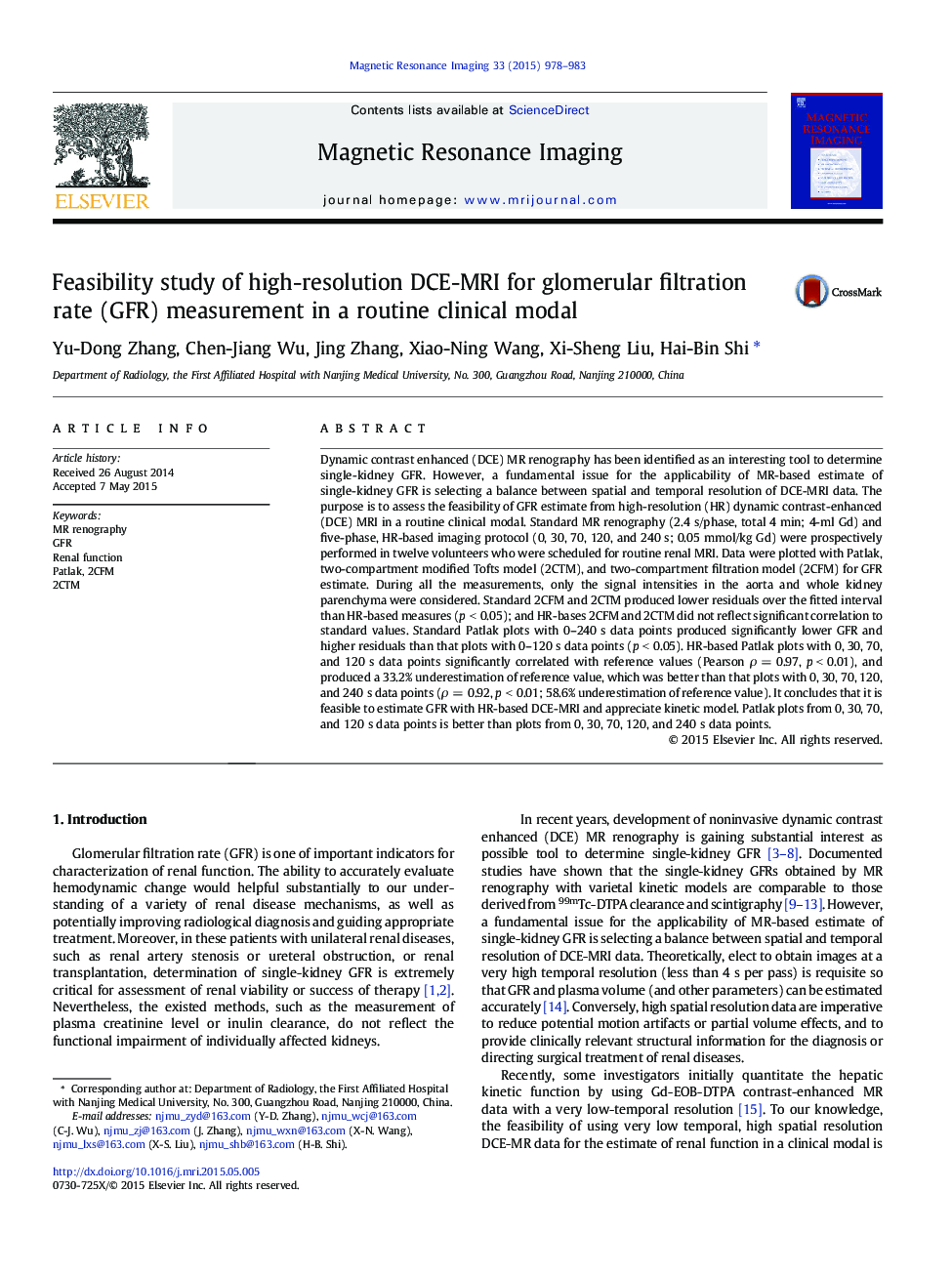| کد مقاله | کد نشریه | سال انتشار | مقاله انگلیسی | نسخه تمام متن |
|---|---|---|---|---|
| 1806178 | 1025188 | 2015 | 6 صفحه PDF | دانلود رایگان |

Dynamic contrast enhanced (DCE) MR renography has been identified as an interesting tool to determine single-kidney GFR. However, a fundamental issue for the applicability of MR-based estimate of single-kidney GFR is selecting a balance between spatial and temporal resolution of DCE-MRI data. The purpose is to assess the feasibility of GFR estimate from high-resolution (HR) dynamic contrast-enhanced (DCE) MRI in a routine clinical modal. Standard MR renography (2.4 s/phase, total 4 min; 4-ml Gd) and five-phase, HR-based imaging protocol (0, 30, 70, 120, and 240 s; 0.05 mmol/kg Gd) were prospectively performed in twelve volunteers who were scheduled for routine renal MRI. Data were plotted with Patlak, two-compartment modified Tofts model (2CTM), and two-compartment filtration model (2CFM) for GFR estimate. During all the measurements, only the signal intensities in the aorta and whole kidney parenchyma were considered. Standard 2CFM and 2CTM produced lower residuals over the fitted interval than HR-based measures (p < 0.05); and HR-bases 2CFM and 2CTM did not reflect significant correlation to standard values. Standard Patlak plots with 0–240 s data points produced significantly lower GFR and higher residuals than that plots with 0–120 s data points (p < 0.05). HR-based Patlak plots with 0, 30, 70, and 120 s data points significantly correlated with reference values (Pearson ρ = 0.97, p < 0.01), and produced a 33.2% underestimation of reference value, which was better than that plots with 0, 30, 70, 120, and 240 s data points (ρ = 0.92, p < 0.01; 58.6% underestimation of reference value). It concludes that it is feasible to estimate GFR with HR-based DCE-MRI and appreciate kinetic model. Patlak plots from 0, 30, 70, and 120 s data points is better than plots from 0, 30, 70, 120, and 240 s data points.
Journal: Magnetic Resonance Imaging - Volume 33, Issue 8, October 2015, Pages 978–983